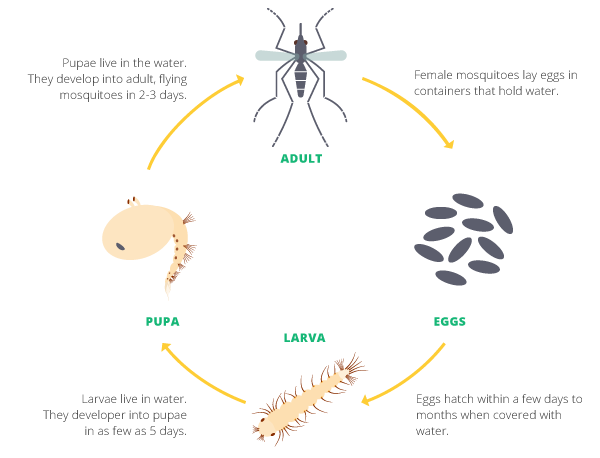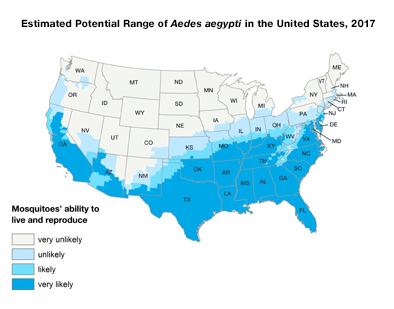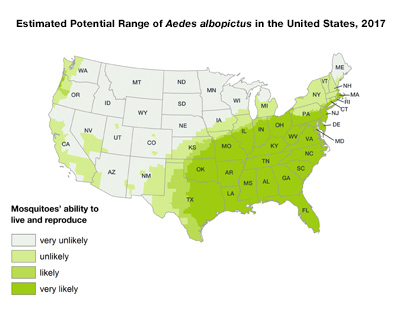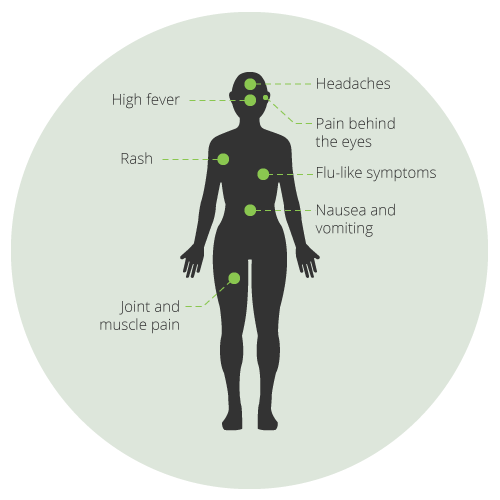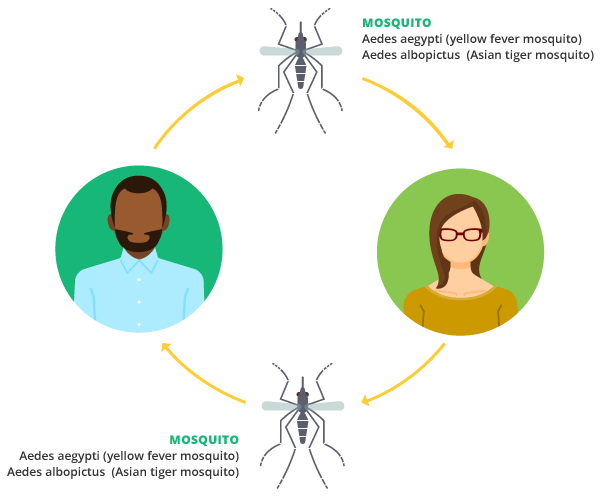Dengue
What mosquitoes can transmit Dengue Hemorrhagic fever?
In the Americas, both Aedes aegypti, the yellow fever mosquito, and Aedes albopictus, the Asian tiger mosquito, are responsible for transmission of dengue virus.
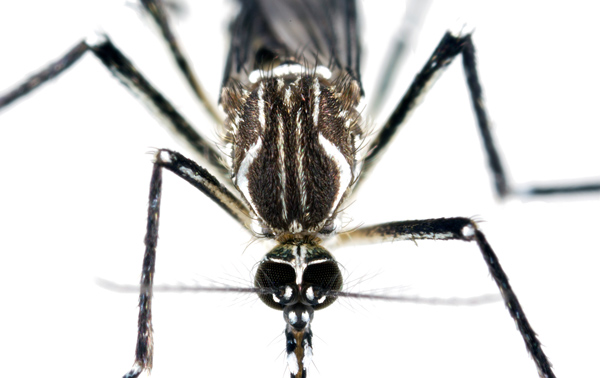
Aedes aegypti
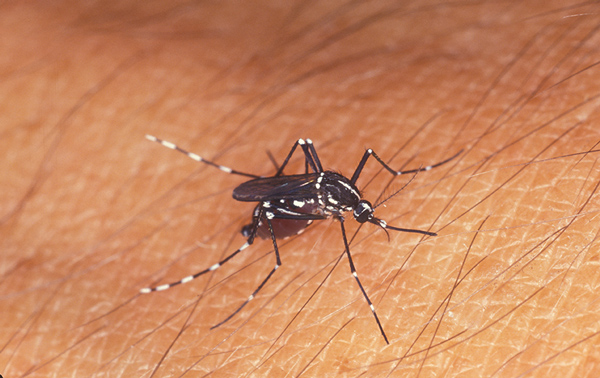
Aedes albopictus
Where do they live?
Both the yellow fever mosquito and the Asian tiger mosquito are found throughout much of the United States. They are also globally distributed in tropical and subtropical areas. The mosquito life cycle is defined by four major life stages: 1) egg, 2) larva, 3) pupa, and 4) adult.
The adult is the life stage people are likely the most familiar with. In the adult stage, mosquitoes fly around, and the females try to feed on our blood.
However, people may be less familiar with the larvae and pupae, or the immature stages of mosquitoes that live in water. More specifically, the yellow fever mosquito and the Asian tiger mosquito live in artificial and natural containers around human dwellings. These containers can potentially be anything that holds water including a tree hole, bird bath, clogged rain gutter, children’s toys, garbage, tires, and a range of other items.
Unlike many other nuisance mosquito species, as adults, both the yellow fever mosquito and the Asian tiger mosquito are primarily looking to feed on human blood during the day, when people are the most active. It is important to note that only the female mosquito feeds on blood.
What can I do to prevent infection?
KEEP EMPTY
Eliminating Immature Mosquito Habitats
The immature stages of these two species inhabit containers that are found around our homes. Eliminating immature mosquito habitats is an excellent way to prevent mosquitoes from completing their life cycle. This practice is known as source reduction.
To do this, simply go around your home and identify any containers that are holding water. Trash items can be discarded. For containers that will regularly refill with water, dumping out the water every five days will prevent immature mosquitoes from being able to reach adulthood. As an extra step, scrub the interior surfaces of the container with a sponge to dislodge any remaining mosquito eggs and rinse them off. If you have tires on your property, check with your local mosquito control or waste management company to find out if there are any programs in place to help you. dispose of the tires on your property. For decorative ponds that cannot be emptied out regularly, consider stocking it with mosquito fish (ex: Gambusia affinis, Gambusia holbrooki) or utilizing a biological control agent, such as products with the active ingredient Bti (Bacillus thuringiensis subspecies israelensis).
Using Repellents
In addition to regularly practicing source reduction, using repellants when outdoors and wearing long sleeves and pants can prevent mosquitoes from feeding on you. When using repellents, make sure to choose from the list of CDC-recommended repellents.
Protecting Your Home
Preventing mosquitoes from entering the home is also important in preventing mosquito bites. This includes ensuring that all windows are covered with screens and that the doors to the home remain closed. Essentially, all entry points to the home should be sealed or covered by a screen. These screens should be checked regularly to ensure that there are no holes that would allow a mosquito to slip through. Damaged screens can be repaired or replaced to prevent mosquitoes from entering the home.
What are the symptoms of a dengue virus infection?
An illness caused by dengue virus is characterized by a high fever and at least two of the following: severe headache, severe pain behind the eyes, joint pain, muscle and/or bone pain, rash, mild bleeding, or low white cell count. Dengue is also called “breakbone fever” due to the severe muscle and bone pain that may occur. If an individual is infected multiple times with dengue virus, the resulting illness can be fatal (severe dengue hemorr fever). Symptoms will usually begin 4-7 days after being bitten by an infected mosquito, but it may take as long as 2 weeks to manifest.
What does the dengue virus transmission cycle look like?
In urban and suburban settings, dengue is transmitted by mosquito bite.
A female mosquito can become infected with dengue virus after feeding on an infected person. Once she finishes taking the bloodmeal, she cannot immediately transmit to another person. The virus incubates and multiplies within the mosquito. During this time, she will lay her eggs and eventually look for another bloodmeal. It is during these future bloodmeals that she may be capable of transmitting dengue virus to a new person. That person then becomes infected, which creates a cycle of virus transmission between humans and mosquitoes.

